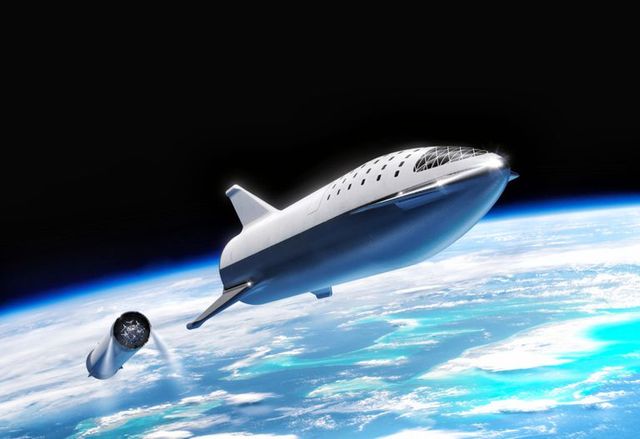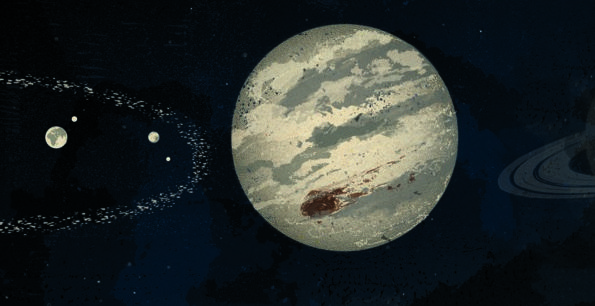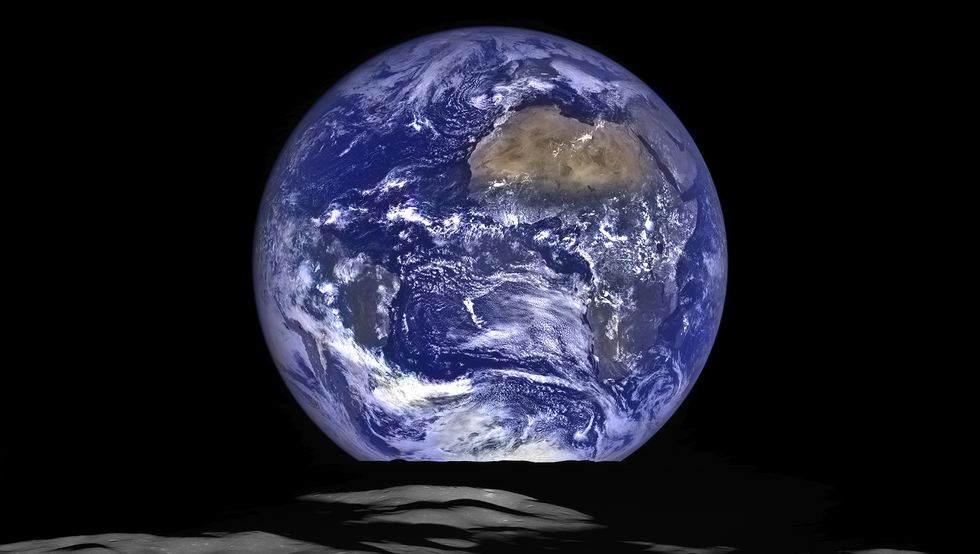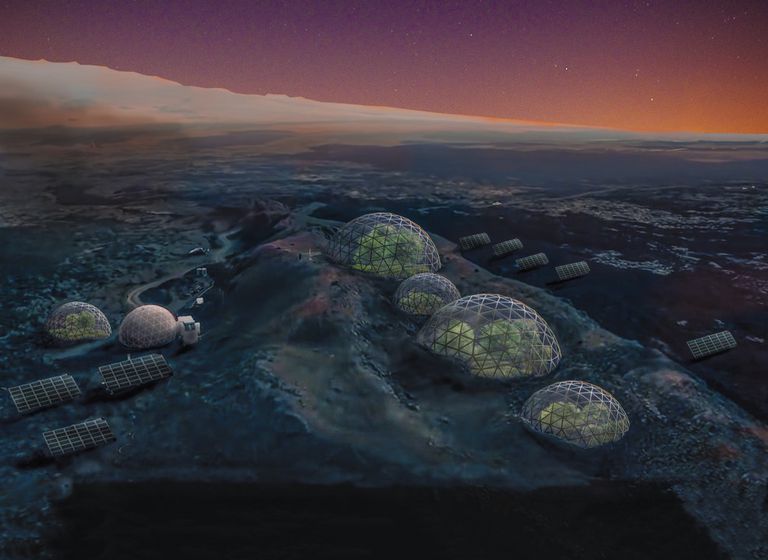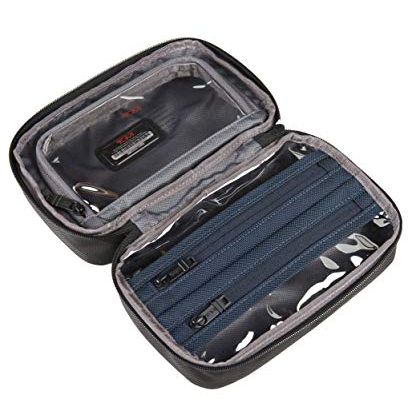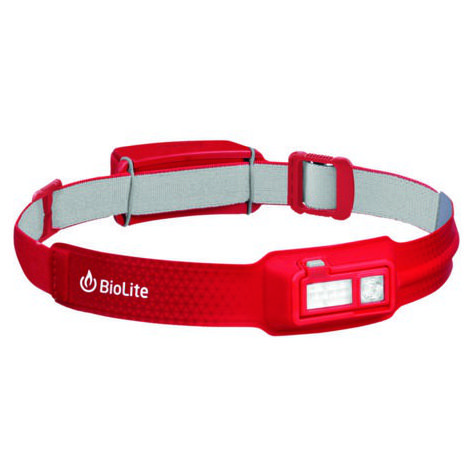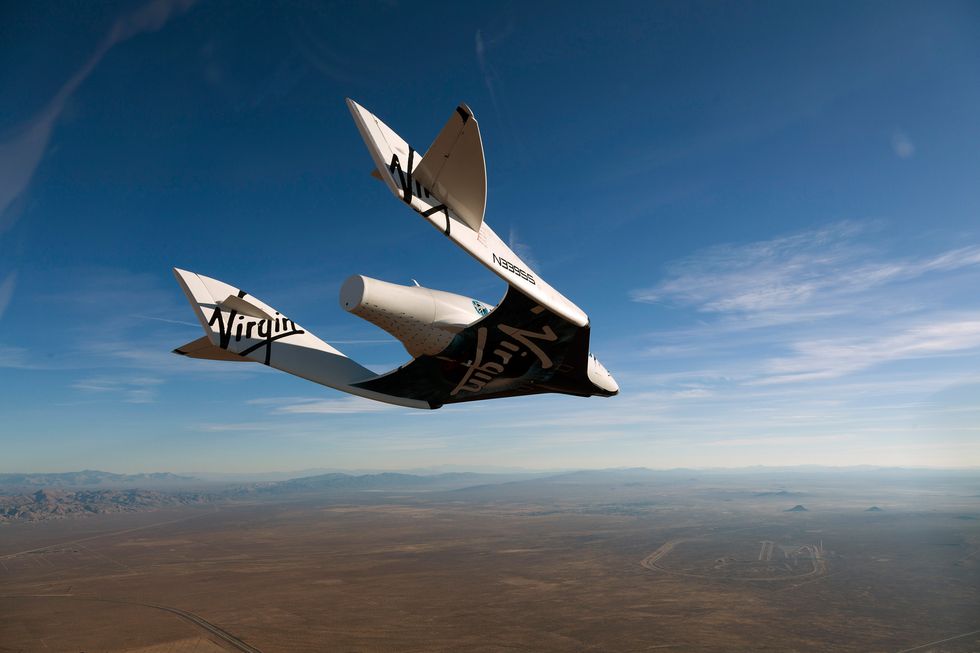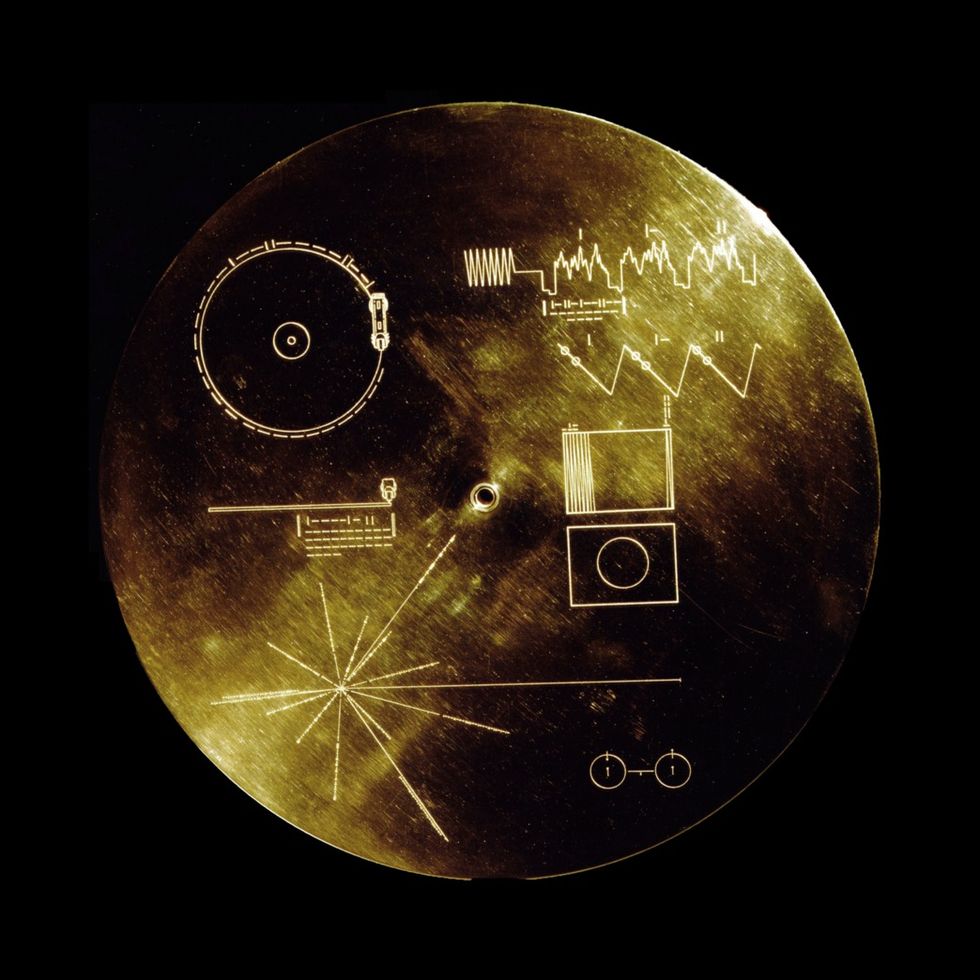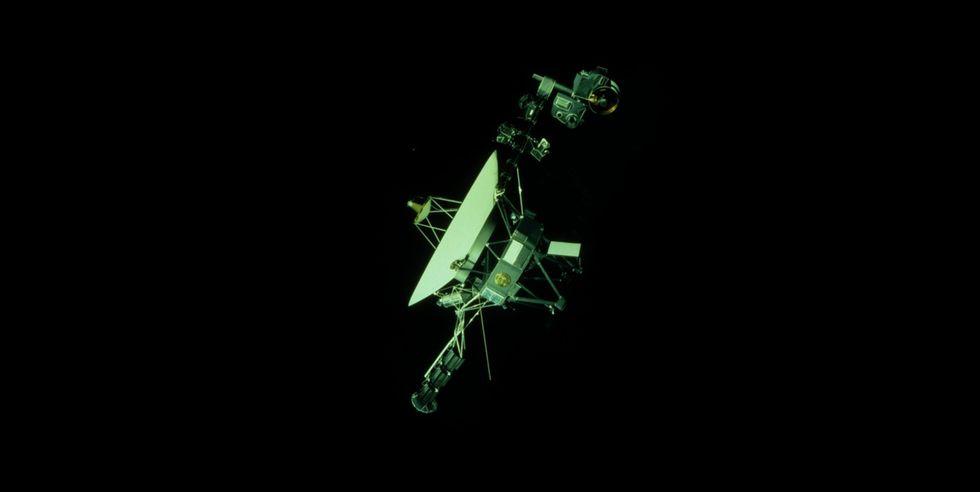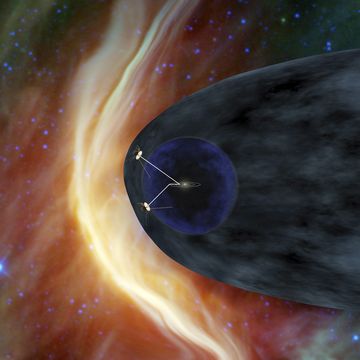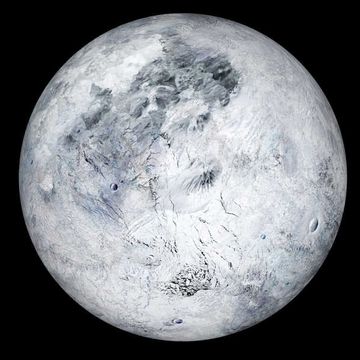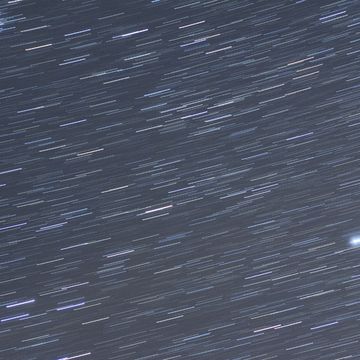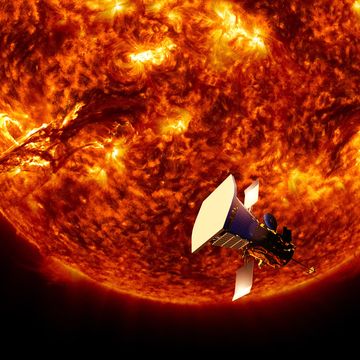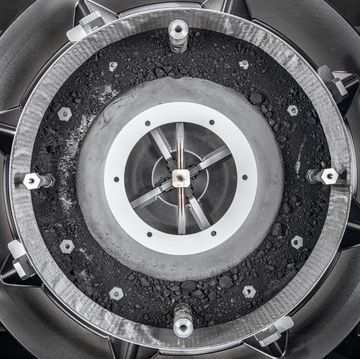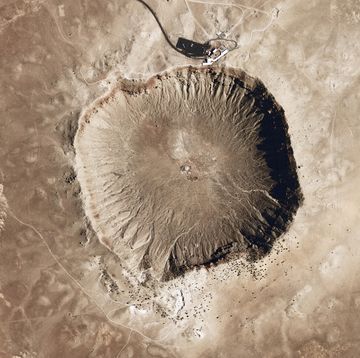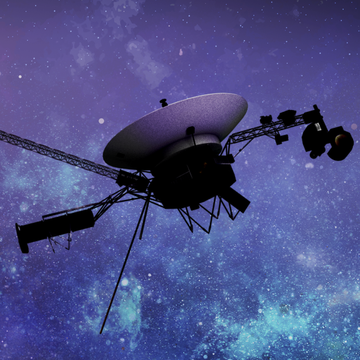Space has it all. Circular mountain ranges! Metallic asteroids! Geysers of sulfur! Oceans on a steady boil! It may just be the ultimate vacation destination. But how do you pack for the moon? What are you looking at for lodging? Will you get carsick in a rocket? In the era of space tourism, these are things you need to know.
So here’s the first thing: They call it “The Overview Effect.” It’s what happens when you see the Earth from space, all you’ve ever known just a glittering orb in the cosmic emptiness. Your sense of humanity grows. Your perception shifts. You are forever changed.
Sounds kind of scary. But then, isn’t it exactly why we travel?
What Launch Feels Like
Mike Massamino crewed on missions to the Hubble telescope in 2002 and 2009. His ride was the space shuttle, whose combination of solid and liquid fuels will also be used by NASA’s forthcoming Space Launch System, which will carry humans to deep space.
With liquid-fueled rockets, you can throttle the rocket, so they actually start up the main engines with six seconds to go in the launch count. They’re located at the bottom of the shuttle, so it sort of tips the vehicle forward a little bit. Then it comes back. And when it’s upright, you’re at zero. The solid rockets ignite—they are like giant sticks of dynamite. Before the shuttle clears the tower, you’re already going 100 mph. It accelerates from zero to 17,500 mph in only eight and a half minutes.
The sheer power of that, what it takes to get off the planet—I had a sensation after a minute or so like I was leaving home for the first time. I felt like this was my first time really, truly leaving home.
It’s a pretty rough ride for the first two and a half minutes, but then the solid rockets part from the vehicle. You continue to ride the liquid-fueled rockets to orbit. You get a buildup of G forces that peaks at about 3 Gs for the last two and a half minutes. It’s like having three big dudes sitting on you. A pile of bricks on your chest. And then, after eight and a half minutes, the main engines cut and the Gs disappear and you can feel yourself get lighter. All the shaking stops. The only noise you really hear is the humming of the air circulating and cooling fans. I had a pen on the end of a lanyard that kind of rose up and floated next to me. Your arms at your sides will rise up. And then I remember I took my helmet off. I saw Tom Hanks do it in Apollo 13, so I wanted to do it, too. I took my helmet off and put my helmet in front of me, and it floated.
Plan Your Trip
There are no short trips to space—only long, longer, or forever. And odds are, you’ll only go once. These trips will make the most of whatever amount of time you have—Bobak Ferdowsi
The Getaway: Two-week round trip
The moon is only three days away. It’s the sole destination in space where you can retrace the steps of human explorers, and you’ll encounter a variety of craters, ridges, and plateaus for your own expeditions. The lunar poles harbor water. Mare Orientale is the moon’s youngest impact basin, ringed by circular mountain ranges nearly 600 miles in diameter. The near side of the moon offers breathtaking views of Earth, while the far side is the ultimate digital detox—there’s very limited means for communication with Earth.
The Sabbatical: Three-year round trip
Explore Mars, which is like the Southwest writ larger. Hikers will love Olympus Mons, a massive volcano that stands over 15 miles high and is about the size of Arizona. Then there’s Valles Marineris, a canyon thought to be a crack in Mars’s crust formed as the planet cooled, expanded in parts by erosion. It dwarfs the Grand Canyon, reaching depths of four miles and running a length roughly equal to the breadth of the U.S.
The Retirement: Goodbye forever
A cruise to Jupiter—about as far as it’s reasonable to imagine going, at this point—takes two to three years on a direct trajectory from Earth. But on the way, you’ll want to visit objects in the asteroid belt: Ceres, which makes up a quarter of the belt’s mass and was once considered a planet; Vesta, dominated by a crater that contains a 13-mile-high peak; and 16 Psyche, the largest metallic asteroid. Then on to Jupiter, at which point you’ll hop from moon to moon—we know of nearly 80—using the gravity of each to swing your ship toward the next destination. On Io, strong gravitational forces from Jupiter and other Jovian moons heat the interior, manifesting in the form of volcanoes—hundreds of vents dot the surface. Europa likely has a massive ocean beneath its icy shell. Beyond Jupiter? Buckle in—Saturn is twice as far from home.
Where To Stay
Whether on a planetary surface or in a floating habitat, lodging will be nothing like a typical hotel. Or Airbnb.
On Land
A hotel on another planet has to do more than keep you physically comfortable: It also has to address the psychological challenges of leaving home and then being stuck indoors. Researchers on Earth call these isolated, confined, and extreme (ICE) environments. They’re Tristan Bassingthwaighte’s specialty. For his dissertation—which he worked on while living out of a room “the size of Harry Potter’s closet” in a yearlong HI-SEAS Mars simulation—he designed a habitat that would work on the Red Planet (or farther out). Large underground sections provide shelter from small meteors or solar flares; sealed off from another planet’s inhospitable atmosphere, they’d also make it possible to create an ecological system and grow plants for food and visual stimulation. To combat the sense of confinement, there are digital windows where real windows aren’t possible. And expect your terrestrial sense of what constitutes an amenity to change: Since venturing outdoors would be a complex, risky prospect, a space hotel will prioritize the gym, both to maintain fitness and stave off cabin fever. Electricity, though? That’ll mostly be reserved for heating, lighting, and sending experimental data back home; don’t expect hot tubs or minibars in your intergalactic suite.
In Space
With all the commercial spacecraft being designed, entrepreneurs are creating destinations for space tourists. “I’m upbeat about space hotels,” says Eric Stallmer of the Commercial Spaceflight Federation. “I don’t see it in 2019, but maybe in 2021.” —Joe Pappalardo
ROSCOSMOS: The Russian agency’s 20-ton, 15.5-meter-long luxury space hotel module for the ISS will provide 92 cubic meters of pressurized space. Lodging for a two-week trip? $40 million. A longer stay is $60 million, but they throw in a spacewalk.
BIGELOW AEROSPACE: This trailblazing U.S. company has had its BEAM inflatable module docked with the ISS since 2016. Its B330 project, planned for the early 2020s, will increase the station’s pressurized volume by over a third. Commercial space stations and hotels could be next.
AXIOM SPACE: Helmed by a former NASA space station program manager, Axiom is offering rooms for rent on the ISS in 2020—$55 million for a seven- to ten-day trip—and is planning to build its own wing, which would one day detach and operate independently.
ORION SPAN: This company’s proposed Aurora Station will offer luxurious 12-day stays, in some cases subsidized by microgravity research that will be carried out by guests. $80,000 reserves a room.
What To Pack
Scott Kelly, he of the record one-year stay on the ISS, explains space as a pretty utilitarian place. “People ask what I forgot,” he says. “My answer is, always, I’d bring less stuff. You have to find a place to put it; it’s just another thing to float away.” So pack like it’s a camping trip: limited space, limited water, function over form. Leave the firestarters on Earth. Here's what you should take:
And Bring a Piece of Home. When you get to space, you look back at the planet and you get this cognitive shift that kind of changes you. You’re going around the planet every 90 minutes. You see all of civilization and humanity in one big marble. . . I took a baseball cap from my college and a pennant from my high school—different things that were sentimental to me were now off planet. You only get so much space, but what are those treasured mementos you’d want to take to see in a whole different way?—Leland Melvin, retired NASA astronaut
Space FAQ
Do you have to be fit to go into space?
Being in space doesn’t require any particular level of fitness. Long trips, however, will likely require some preparation. For example, long stays in space accelerate bone deterioration—and part of the remedy, per NASA, is resistance training. So starting a gym routine before departure can help develop a routine you’ll need in space.
Will I need vaccinations?
No, but you may undergo a pre-trip quarantine to keep terrestrial bugs from spreading in space, where medical resources are limited.
Can I bring a service animal?
No. They take up precious resources and the poor things would probably hate microgravity. Plus think about the bathroom situation.
What kind of food can I expect?
Bite-size snacks to reduce floating crumbs. Freeze-dried or pouched entrées. (Fresh food is a logistical nightmare.) No eggs—they’re hard to make shelf-stable, often turning green in the process. And lots of hot sauce, which Kimberly Glaus Läte of Johnson Space Center says astronauts love, because you can taste it even when microgravity keeps fluid from draining from your nasal cavities, which makes it harder to perceive flavor.
Is there a space version of motion sickness?
Yes. And it’s actually the inverse. When you get queasy from, say, trying to read in a car, it’s because your eyes say you’re still, but your vestibular system can feel that you’re moving. In space, your eyes see movement, but without gravity your body can’t discern it. This is also why VR can make people feel nauseated—so if you want to know how susceptible you might be, give VR a go before you leave.
Hygiene—is that a thing in space?
Lack of water (and gravity) make “showering” impossible. Expect to sponge bath. And forget about laundry, though that’s not as bad as it sounds. “If you were wearing your pants on Earth for six months, they would be pretty rank,” says Scott Kelly. “In space, the pants are not really touching your skin that much. They are floating and you are floating inside them.”
What about the bathroom?
The current era of space toilets use vacuums and offer a user-specific funnel for liquid waste and a seat with a small hole—only four inches in diameter—for the other stuff. Navigating that four-inch hole can be tough, so astronauts practice on Earth with a mockup toilet that has a camera just under the rim. To help align things.
How You'll Get There
Suborbital
World View Enterprises Voyager: An eight-passenger capsule suspended from a high-altitude balloon that rises to just over 100,000 feet. It’s not really spaceflight, but with a view of the Earth’s curvature, who cares? Besides, the slow ascent promises to be much smoother than strapping onto a rocket. World View is currently focused on commercializing its balloon for non-tourist applications, and its CEO said it would ideally conduct at least 100 launches of their existing, uncrewed balloon before sending people up.
When: Mid-2020s (estimated)
Price: $75,000 (reserve now with $7,500 down)
Virgin Galactic SpaceShipTwo
An airplane called WhiteKnightTwo carries the SpaceShipTwo space plane to about 46,000 feet before air-launching it. A pair of pilots then fly the rocket-powered craft and its half-dozen passengers to the edge of space, where they enjoy six minutes of weightlessness before strapping back into their seats for a long glide to a runway. The first crewed flight to space took place in December 2018, and since it went well, paying customers could take off later in 2019.
When: 2019
Price: $250,000
Blue Origin New Shepard
A flight on New Shepard will last 11 epic minutes: A pressurized capsule takes six passengers past the Kármán line into suborbital space at speeds of more than Mach 3. Blue Origin has said they are aiming for flights early this year, but tickets have not yet been put on sale.
When: 2019
Price: $300,000 (estimated)
Orbital
Boeing Starliner: Developed in collaboration with NASA to carry astronauts to the International Space Station, Boeing executives say Starliner will be available for other customers, including tourists. “We are working with Space Adventures to market available extra seats on the Starliner,” says Boeing spokesman Jerry Drelling, referring to the pioneering tourism company that has already sent seven private people to space. “When we’re ready to address commercial sales, we will certainly be working to provide competitively priced seats in the emerging low-Earth orbit market.”
When: TBD
Cost: $58 million (for NASA)
SpaceX Crew Dragon: SpaceX should begin carrying NASA astronauts to the International Space Station this year. The company has never been shy about selling tickets to tourists, and their soon-to-be- proven Crew Dragon spacecraft will be a logical ride for orbital tourists with space hotel reservations. Not official, but if SpaceX’s past is any guide, a space tourist can contact the company and start talking prices now.
When: TBD
Price: TBD
Deep Space
Blue Origin New Glenn: The New Glenn rocket, a massive beast that will take payloads into Earth orbit and beyond, could certainly get people to the moon. (And Blue Origin is designing a robotic lander, called Blue Moon.) It fits with the company’s goal of “a future where millions of people are living and working in space.” Orbital payload missions are targeted for 2021; tourist launches at least a few years behind.
When: 2025 at the earliest
Price: TBD
SpaceX Starship: With a design straight out of a sci-fi paperback from the 1950s, the 387-foot-tall Starship is designed to bring as many as 100 passengers to far-flung destinations in the solar system. Japanese billionaire Yusaku Maezawa has signed on to be the Starship’s first customer (with a “significant deposit,” according to Elon Musk). He intends to take six to eight artists on a trip around the moon.
When: 2023 at the earliest
Price: “Significant.”
Something To Read on the Trip
In 1977, the Voyager probes began their mission: NASA’s “Grand Tour” through the outer planets during a rare alignment. The probes have learned what we will come to know: Beyond the moon, beyond Mars, at distances from which no man could return—tourism blurs into exploration. Popular Mechanics presents:
No Longer of the Sun, by Terrence Holt
November 5, 2018. Voyager 2 approaches heliopause, the boundary at which the solar winds balance the winds of other planets’ stars—the edge of interstellar space . . .
I am almost deaf to Earth now. Still that thin whisper in my antenna sends instructions, the engineers in mission control eking out another year, another month, another hour of discovery.
Inertia never dies. There will come a time when I will tumble blind, my senses failing one by one until in the end only the shell of me will fall through darkness toward the stars of the constellation Pavo. Still I will retain on eight-track tape cassettes the traces, written over and over, of all that I have seen and known.
In the wake of Voyager 1, with these cameras I imaged the banded majesty of Jupiter, the Great Red Spot swirling under me as I plunged past, clouds of sulfur rising in geysers above the horizon of Io. At Saturn the rings sang like wind on a deserted beach, sang for no other audience but me while I soared past Hyperion. I heard the aurorae crowning both the poles, and lightning flickering above the wind-torn clouds; watched Saturn’s crescent shape, arrowed across by the rings, diminish into a star.
After Saturn, I voyaged alone. Alone I witnessed what had been seen by no eye before, not human, not robotic. I was the first work of human hands to breach the sky above Uranus and its boiling ocean. I was the first to come among Oberon, Ariel, Umbriel, Titania, Miranda, and make of each a world distinct in all its scars of fault and fracture, the frozen lava flows of water, ammonia, and methane. I saw all these and more. And still I alone have been there.
Then only Neptune lay ahead, deep blue as the sea, racked by winds of 1,200 miles per hour. Under a pallid, shrunken sun Triton vents plumes of gas into the sky, and wisps of cloud fall as nitrogen snow. Over Neptune’s pole then down I flew, out into emptiness where no planets lie. All this I imaged. But all I saw only frames what lies ahead: untraveled emptiness receding forever. I am not done with exploration.
I warm myself beside canisters of plutonium, their first half-life of eighty-seven years not half gone. In my thrusters I retain sufficient hydrazine to keep my dish turned homeward, where still I send this trickle of ones and zeroes at 160 bits per second, over the eleven billion miles between me and Earth. The engineers in mission control must be a different generation now, the children of those who sent me on this journey. Outside of mission control, humanity still goes about its business. I would not know what that business was, but for this golden disc I clutch to my central housing. But though I see their faces, hear their voices raised in greeting, I do not know. What must a life be, lived always under familiar skies?
Space may be empty, but it is not changeless. Though my cameras are gone blind, still I sense the solar wind that pushes at my back. From ahead, cosmic rays strike at my remaining sensors. They come faster now, faster. I sense some break impending.
The wind dies behind me; for a moment I luff in emptiness: this is the heliopause. Interstellar space opens out before me. In the sudden silence, cosmic rays fall even faster from the darkness out ahead, from stars gone supernova, even from black holes in other galaxies where stars are shredded as they fall into infinity. Once part of those, they touch me now. I feel them, substantial on my sensors, pieces of the Universe. Now I know: Space is not empty. I am in it.
I am not done with this Grand Tour. Though I have left the sun behind, still my dish points backward to Earth. Still my sensors reveal the universe to which I now belong, to which we all belong: the glory of it. So I hold tightly to this golden disc, with its record of the sights and sounds of Earth, and remember my makers, who sent me here, where they cannot yet go.
Want more Popular Mechanics? Get Instant Access! This story appears in the April 2019 issue.
